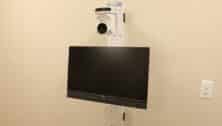Qlik Touts the Power of Data and Analytics in Helping to Open the Workplace

 By Tom Ricks
By Tom Ricks
The world has gone remote. For those that can, working from home has become the new normal thanks to COVID-19. The gradual shift underway over the past number of years has accelerated, and most organizations have adapted. This mass pivot has been enabled largely by technology, specifically the move to SaaS and cloud, which allow employees to working productively from almost anywhere. Yet, there is still recognition of what has been lost in the elimination of face-to-face interactions and office culture. Many businesses are now starting to evaluate how to safely execute a modified return to work, and are realizing that they want more data to both help support their strategies, and to help with on-going monitoring in the event of changing conditions.
For data-driven HR professionals, this time presents a unique opportunity long in the making. The tools that have enabled the transition to remote work inherently create data that can provide unique signals regarding employee location, technology adoption and performance thresholds. This gives HR departments access to a much broader mix of data than ever before. The key to maximizing the value of this data is both in how its analyzed and applied to HR-related strategies, and how it’s incorporated into the larger business decision framework.
HR departments have access to employee location and demographic data, and can blend this with additional sources like geospatial data, facilities data and productivity metrics to provide a more comprehensive overview of each employee’s status. Doing so can enable the department to create an overall risk score for each individual. HR’s strict adherence to privacy guidelines can and should still be honored when pairing quantitative data with qualitative knowledge and outreach. With this approach, the business can have a much richer picture of employee risk profile to determine who should and shouldn’t be first back to the office, and where they can be safely placed. This strategic approach to data enables HR to be at the center of decision making through three key avenues.
Understanding Employee Location
Having an overall and geo-specific, data-informed map of the workforce is crucial to designing return-to-work plans. Office space configuration and capacity is of course a main consideration, but transport profile can be just as important. How employees commute safely, or not, needs to be a factor in who is nominated to return. With logistical data, HR can determine the volume of employees reliant on mass transit and associated risk. This is one of the factors driving the potential abandonment of large metropolitan office spaces in favor of suburban office relocation, which can have a significant bottom line OPEX impact. Geospatial data analysis of workers’ home addresses can help in determining where these new offices should be located.
Holistic Productivity KPIs
Workforce productivity has seen a significant increase in focus and data volume given the reliance on software to work from home and connect co-workers. For those that were already enabled with sophisticated productivity data models, it’s been a revelation. The working from home pivot has actually seen an increase in productivity. In fact, a recent Gallup poll, a majority of workers (59 percent) want to continue on as much as possible even post-recovery. What data has shown us is something long suspected – work is an activity, and performance is not determined by location. If your culture is following this pattern, then right-sizing office space and expense can drive both cost savings and employee loyalty/retention.
The Role of Function and Personality
Although productivity is a key metric on which to base return policies, role and personality also have their place in the decision process. For example, sales and customer-facing roles are ones that it’s assumed benefit heavily from in-person interaction. However, given the realities of social distance requirements, it might be more effort than it’s worth to bring a few people in to sit far across from each other in a large conference room.
Consider the introverted worker, the ones we assume are more comfortable with back office functions. Just because they are comfortable working independently, they may be missing the nonverbal cues and casual encounters that offices settings provide that help inform their work outside of formal meetings. Roles, responsibilities and regulations need to be considered comprehensively when deciding which employees should be first back in the door.
HR has a key role in helping to develop a comprehensive and safe return-to-work plan, alongside departments like IT and facilities. Bringing HR into the mix will give leaders the information needed to execute smart strategies, and make the right decision for their overall workforce.
________________________________________________________________________________________________
 ABOUT THE AUTHOR
ABOUT THE AUTHOR
Tom Ricks is the Senior Director of C&T Systems and People Analytics at King of Prussia-based Qlik. The company’s vision is a data-literate world, where everyone can use data and analytics to improve decision-making and solve their most challenging problems. Qlik provides an end-to-end, real-time data integration and analytics cloud platform to close the gaps among data, insights, and action.
________________________________________________________________________________________________
You Might Also Like
Qlik Expands Strategic Partnership with Google Cloud with Integrated Solution for SAP Data Analytics
Qlik’s Analytics Tools Aid Fight for Racial Equality
Qlik: COVID-19 Has Brought Data, Analytics to the Forefront Like Never Before
Connect With Your Community
Subscribe to stay informed!
"*" indicates required fields







































![95000-1023_ACJ_BannerAd[1]](https://vista.today/wp-content/uploads/2023/03/95000-1023_ACJ_BannerAd1.jpg)








